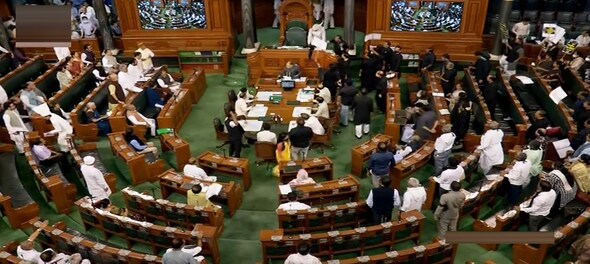
The opposition parties, who have come together to form a new front INDIA (Indian National Developmental Inclusive Alliance) are mulling moving a no-confidence motion in Lok Sabha against the government led by Prime Minister Narendra Modi, according to reports. The move by the INDIA alliance is being seen as a strategy to corner the ruling Bharatiya Janata Party and to pressurise PM Narendra Modi to make a statement on the Manipur violence on the floor of the House in the ongoing monsoon session of Parliament.
The opposition parties have been demanding a statement from PM Modi in Parliament on the Manipur issue. Both Houses have witnessed several adjournments and disruptions due to the uproar over the Manipur issue.
According to reports, the proposal to move a no-confidence motion was discussed on Tuesday among the opposition leaders at a meeting chaired by Congress President Mallikarjun Kharge, amid the stalemate over the Manipur issue in Parliament.
However, considering the current strength of the BJP-led National Democratic Alliance (NDA) in Lok Sabha, a no-confidence motion against the government is expected to be defeated.
What is a No-Confidence Motion?
A no-confidence motion, also known as a vote of no confidence, is a parliamentary tool used to show that the ruling government no longer has the majority in Lok Sabha. It can lead to the government's dissolution if a no-confidence motion is passed. A no-confidence motion can only be introduced in the Lok Sabha, the lower house of Parliament.
According to the Lok Sabha's Rules of Procedure and Conduct of Business, a notice for a no-confidence motion when submitted before 10 AM is considered by the Speaker. The Speaker is set to admit the notice for the motion once the motion is supported by at least 50 members of the House. If it does not have the support of 50 Lok Sabha MPs, the notice is rejected. Once the support of 50 MPs is ascertained, the Speaker should designate a date for discussion on the motion, within 10 days of admitting the notice, as per Rules of Procedure and Conduct of Business in Lok Sabha. After the debate, the motion is put to vote. If the motion is passed with a majority (50 percent of members present and voting on the floor of the House) the government will fall.
No-confidence motions have played a significant role in India's democratic history. Since India's independence, 27 such motions have been raised. Over half of the floor tests were against Prime Minister Indira Gandhi alone. However, only two governments have been ousted through a no-confidence motion, even though numerous such motions have been tabled. The first of these motions to succeed was against Prime Minister Morarji Desai in 1979 and the second one to be passed with a majority vote was against Prime Minister Atal Bihari Vajpayee’s government in 1999.
A no-confidence motion moved by TRS and supported by other opposition parties in 2018 against PM Modi’s government was defeated by 126 votes.
Will the No-Confidence Motion Succeed?
Based on the numbers in the Lok Sabha, the BJP holds a dominant position with 301 seats. Along with allies and independent candidates, their strength further extends to 340 votes. This number excludes potential support from non-aligned parties such as YSR Congress, BJD, BSP, Akali Dal, and JD(S). In contrast, the INDIA alliance and other opposition parties can gather up to 149 votes in Lok Sabha. Despite the odds, the opposition remains undeterred, viewing the motion as a tool to get the Prime Minister to address the Manipur issue in Parliament.
“I am not aware of their move but if they are doing so they should know that last time they brought a no-confidence motion, BJP came back to power with a stronger majority of over 300 seats and the same will happen again and we will get more than 350 seats,” Parliamentary Affairs Minister Pralhad Joshi said in response to a media query about the purported motion.
(Edited by : Sudarsanan Mani)
First Published: Jul 25, 2023 6:15 PM IST
Check out our in-depth Market Coverage, Business News & get real-time Stock Market Updates on CNBC-TV18. Also, Watch our channels CNBC-TV18, CNBC Awaaz and CNBC Bajar Live on-the-go!


Lok Sabha Election Phase 2: Experts decode the key trends and issues in key battleground states
Apr 26, 2024 11:53 PM
2024 Lok Sabha Election | Which way the wind blows in the second phase
Apr 26, 2024 6:09 PM

